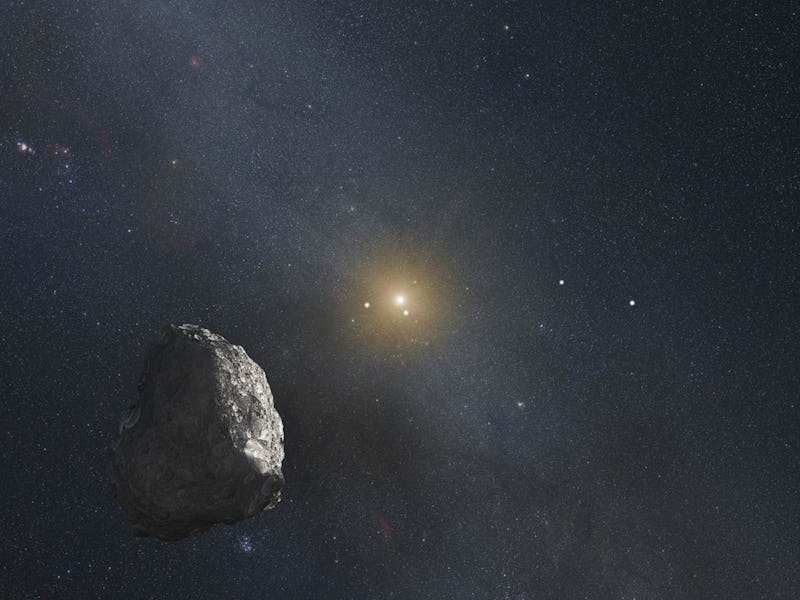The Uncanny Donut-Shaped Region Beyond Neptune Could Be ‘Billions of Miles’ Larger Than We Thought
A NASA spacecraft has encountered a puzzling finding in this cosmic hinterland.

Hundreds of thousands of icy rocks lurk around in the Kuiper Belt, a place discovered just a few decades ago, and exists far beyond Neptune. As a NASA spacecraft sojourns deeper into space, it has encountered a puzzling finding in this cosmic hinterland: The Kuiper Belt may be much bigger than expected.
Neptune, Uranus, Saturn, and Jupiter formed billions of years ago and their gravitational influence may have cleared out the middle of the Solar System of the objects that now live in the Kuiper Belt. Now, after having been slingshotted into the dark and frigid outer edges of the Solar System, these planetary building blocks are coming into the spotlight with missions like NASA’s New Horizons spacecraft.
An artist’s concept of a collision between two objects in the Kuiper Belt.
To give an idea of how far away New Horizons currently is, it has been almost nine years since the spacecraft visited Pluto. It’s now about 60 times farther away than the distance between the Sun and the Earth, or 60 astronomical units (AU).
During the three years it took to go from 45 to 55 AUs, its Venetia Burney Student Dust Counter (SDC) instrument found something unusual. The Kuiper Belt showed higher levels of dust than models suggested. The dust is a symptom of its environment and could mean several things that the New Horizons team hopes to one day answer.
NASA officials announced on Tuesday, adding that the work is detailed in a study published in late January in the journal Astrophysical Journal Letters.
NASA says the new data contributes to “a growing body of evidence that suggests the outer edge of the main Kuiper Belt could extend billions of miles farther than current estimates — or that there could even be a second belt beyond the one we already know.”
Pluto is undeniably a frigid place, this image shows. According to NASA, this is the most accurate natural color images of Pluto from the space agency’s New Horizons spacecraft. Now located about 60 AU from the Sun, the spacecraft flew past the dwarf planet at a distance of around 39 AU from the Sun in 2015.
Telescopes on Earth have discovered several Kuiper Belt Objects that exist far beyond the traditional outer edge of the belt, around 50 AU. This, plus the New Horizons dust readings, highlights the scope of this icy population. The dust can be made when two objects smash into each other.
If earlier science models were accurate, New Horizons should have sailed beyond the Kuiper Belt about 10 AU ago. Now there are new ideas about the region's size.
The outer edge could be located at 80 AU, which, if Neptune’s orbit is considered where the belt starts (around 30 AU), means that the Kuiper Belt, on its own, is about 10 times bigger than the distance between the Sun and Jupiter.
New Horizons has notched 5 billion miles over 18 years. NASA says it has a lot of life left in it. According to the agency, the spacecraft should have enough propellant to carry it beyond 100 AU from the Sun and to operate through the 2040s.
One day, when it’s even farther away than it is now, the SDC instrument may sense the dominance of interstellar particles. If and when that happens, astronomy from the edge of our cosmic backyard won’t ever be the same.